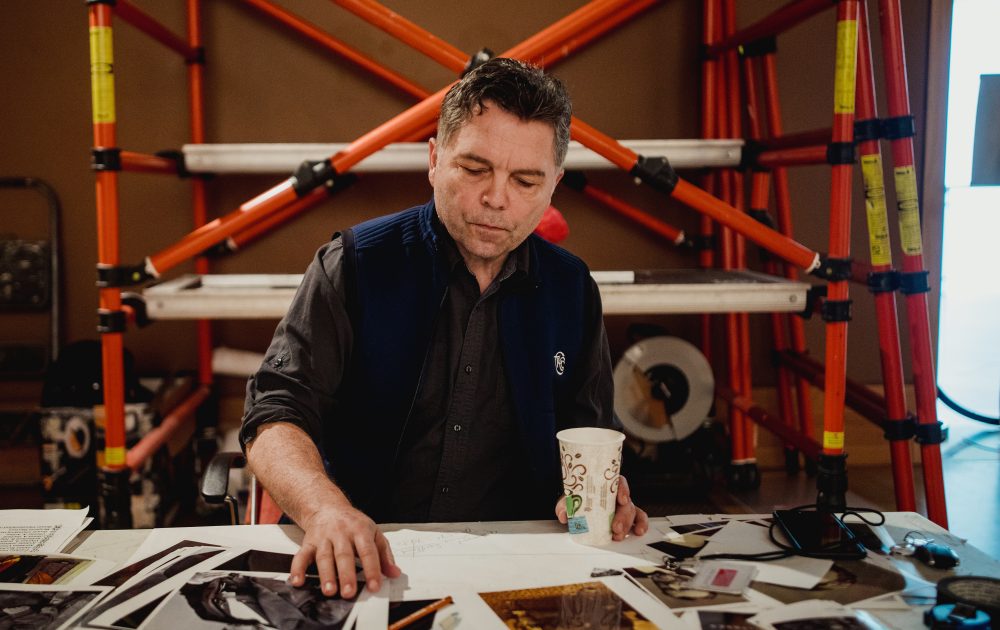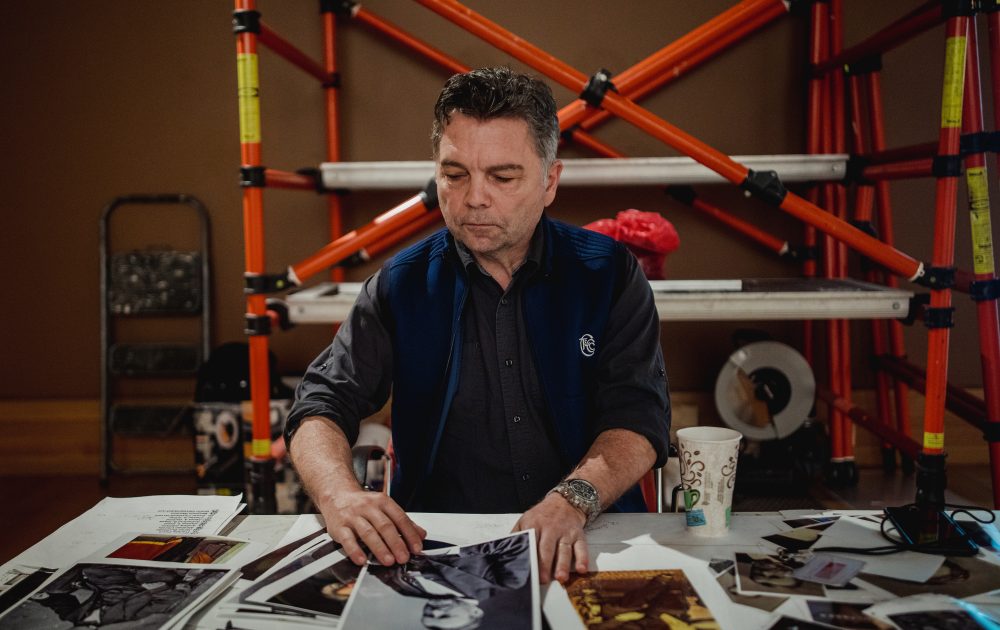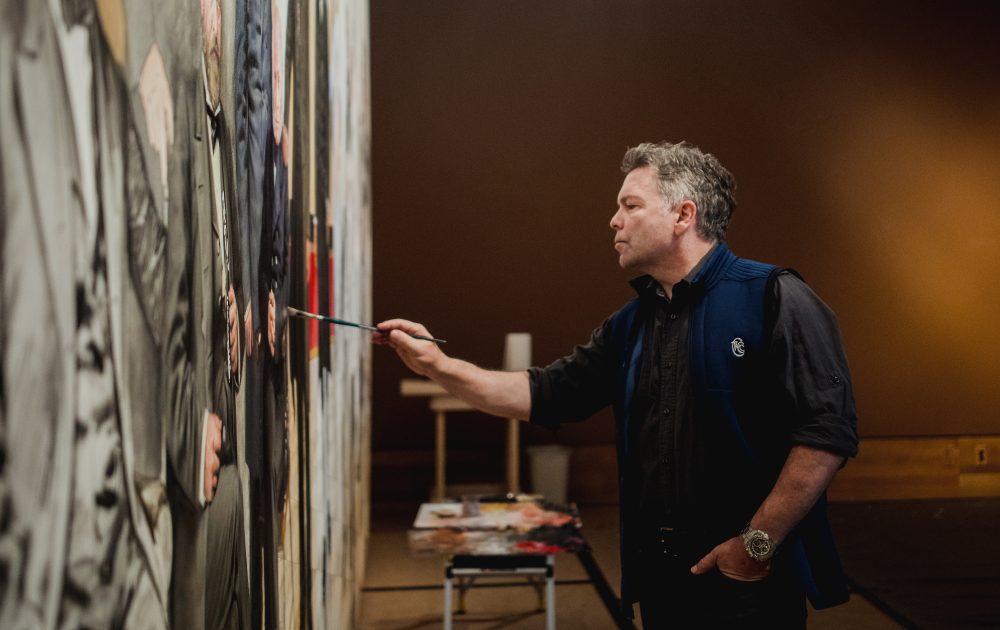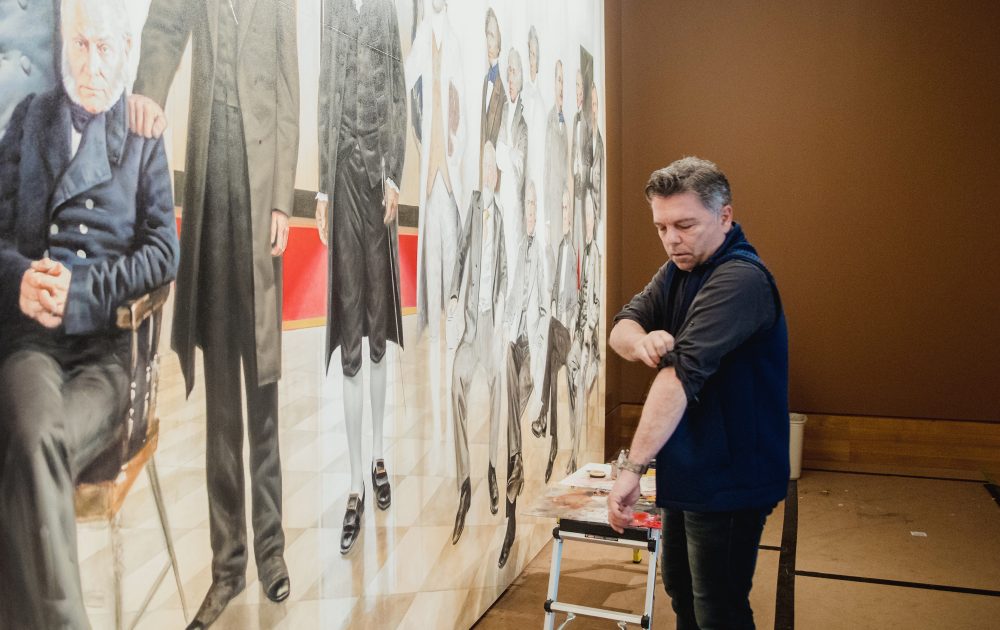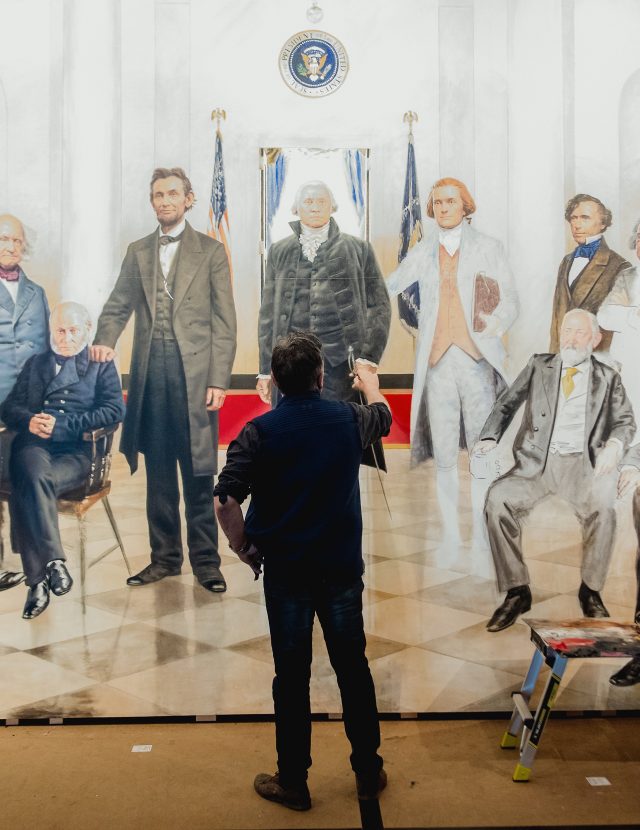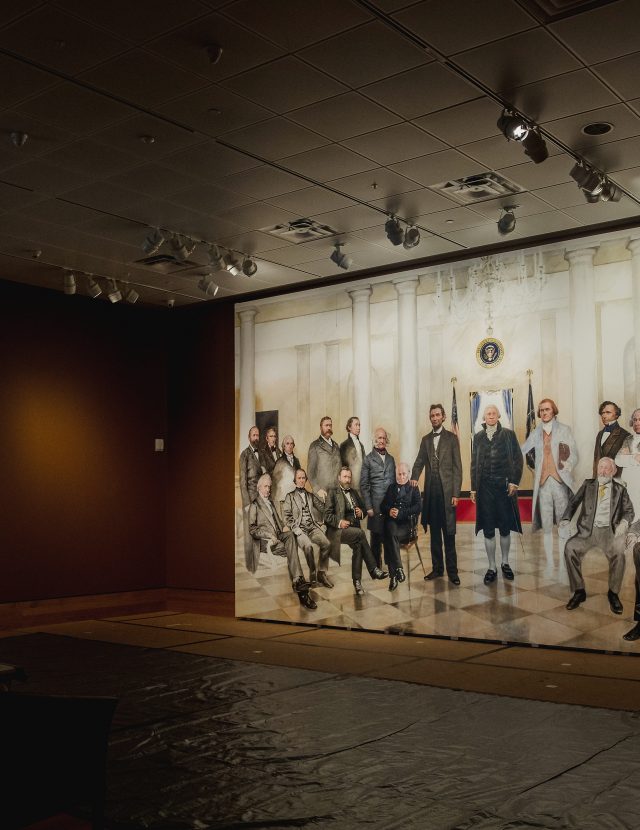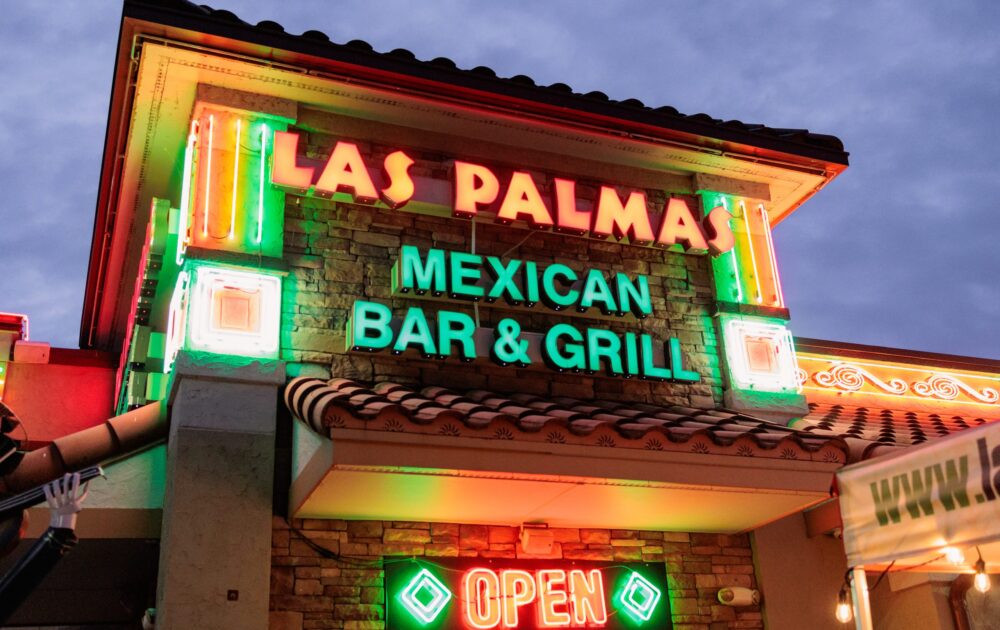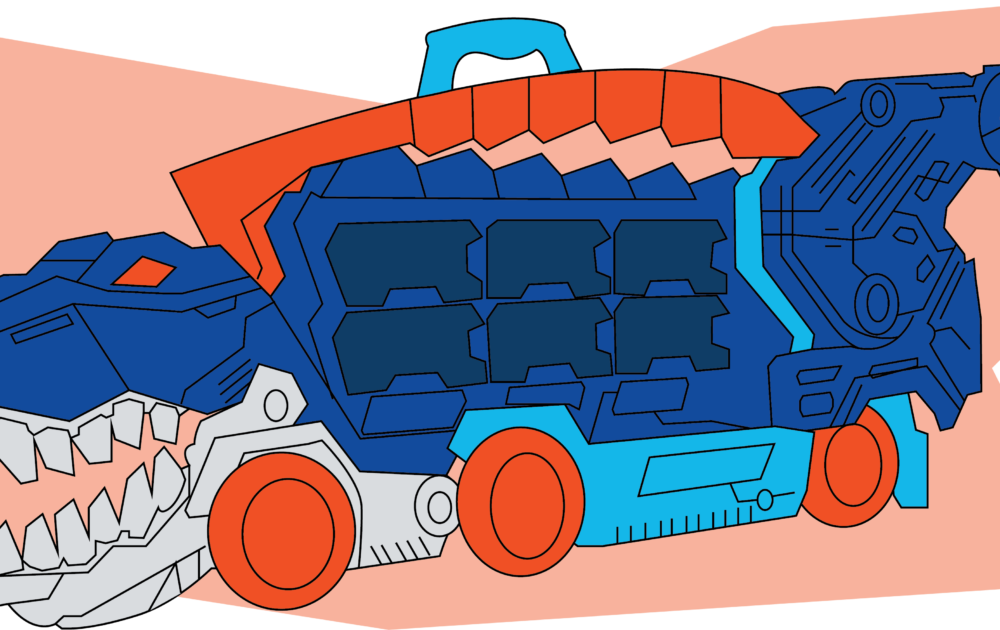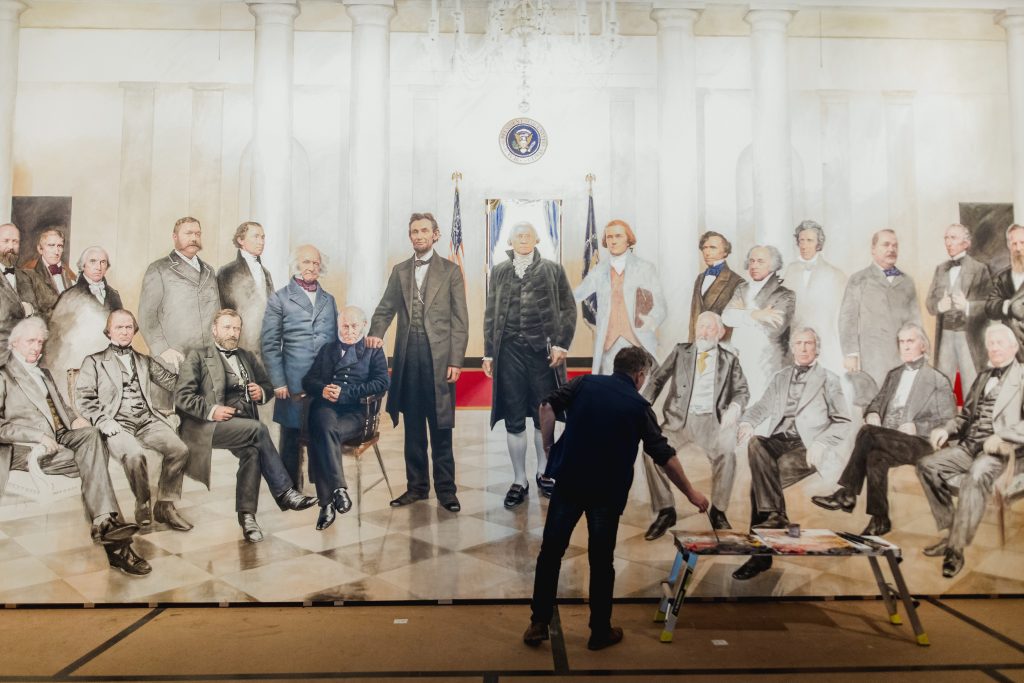
Three days after the terrorist attacks in September of 2001, a Bulgarian man and his family received the immigration papers that they were sure wouldn’t be coming after the planes hit the Twin Towers. With hope and excitement for a new life in the Land of the Free, Ross Rossin moved his family to the United States of America. Now, nearly 19 years later, Rossin is continuing one of the largest homages to the American Presidential Institution. He is actively painting the “Commanders in Chief” collection inside the Booth Western Art Museum, located in Cartersville, Ga.
But why is a Bulgarian immigrant painting the American presidents in Cartersville, you may ask?
We had the opportunity to cross the velvet rope, ignore the “Do Not Disturb the Artist” sign and have a conversation with Rossin himself.
When Rossin speaks, you can’t help but listen to every word. The artist has an incredible view of America and a respect for the history of this country. He speaks of his decision to start painting the first Presidential portrait of the three-part collection by explaining, “when somebody like me comes to this country, there can be a certain excitement and appreciation. And the question is how exactly do you show this? Each and every one of us – millions of us – show it in one way or another, mostly through hard work and living a decent life as a new American citizen.”
Rossin wants to give back to the country he loves. “I always loved American history,” he says, “and I was very interested in the Presidential history of this country for that same reason. I try to understand what makes this country truly great, and how for 250 years it is consistently growing and getting greater and greater. And so, I wanted to see the face of the Presidential institution on one canvas and capture the 20th century, the past century.
“Something like this has not been done before at least not to this scale,” he continues. “Practically life size, 18 men gathered together. I wanted to make a portrait of the institution rather than just a number of individual portraits. My thoughts were to go beyond just simple recognition of who is who, who did what and so on.”
And it is indeed life-size. The original mural is currently displayed outside of the painting room when you first enter the second level of the museum. The work includes a key of which president is which, however, due to the incredible accuracy of the painting it is fairly simple to name each man without having to use the key. This project is a labor of love.
Rossin is passionate about his work on the entire project, but the first painting wasn’t commissioned. It was his way of expressing his reverence for America. “It was not a commission work,” Rossin recalls. “It was just a work of love. I often call it my love letter to America. That’s why I started and I finished it in 2004 while working out of an Atlanta gym at Westminster School. Just like here at the Booth Museum, the kids over there were allowed to see the process of completing the painting. More than anything, I study human nature. But in this painting I am studying the institution, I’m studying the country, I’m studying the spirit of this country. I think coming from the outside it gives me the unique opportunity to see the big picture. I did not get lost in the little things. I think that this is a great advantage and I share what I see with everyone, with the community, with the country and with the world for that matter. Paintings like this, they last for decades and centuries. I am perfectly aware of the responsibilities that come with a work of art like this.”
Rossin recognizes his responsibility and his respect for the institution is a driving force for his approach. But, he has a message that he is hoping these paintings will give to those who view them.
When gazing at the paintings, something strange happens. You are not simply looking at a painting and nodding your head in approval of the craftsmanship. They invoke every kind of emotion and that is exactly what Rossin wants.
“The painting is nothing more than an invitation to communicate with their spirit and their legacies. So the meeting is actual. It’s not physical, obviously, but its actual. It is a meeting of ideas, a meeting of characters. When you look at them, they come to life through your memories, your tales and stories. You remember everything they have done and everything they didn’t do. So they do meet.”
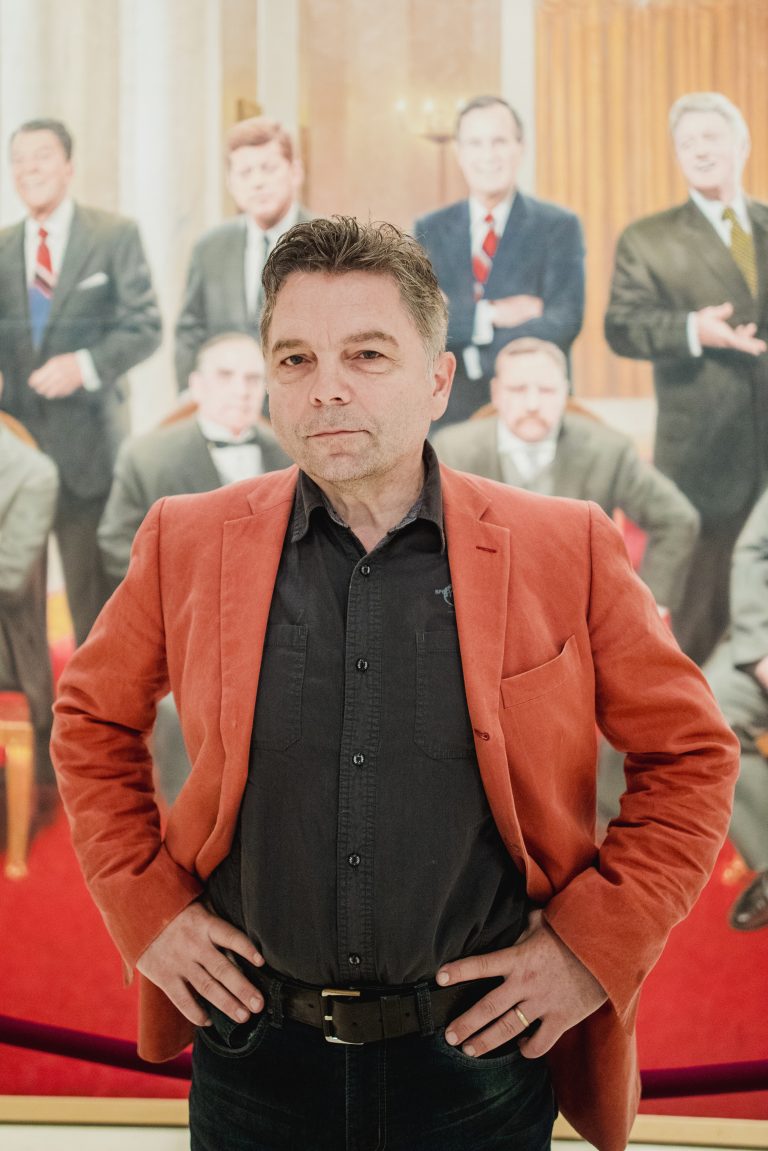
Visitors are suddenly faced with all the responsibility these men have had over the nearly 250 years that our country has stood on its own. They see how our country has evolved and how each president has shaped the nation in his own way.
“This 20th-century painting that has been at the Booth now for nine years and I hope it shows exactly this genuine sense of optimism and positive attitude towards life,” Rossin explains. I hope in creates a positive attitude towards the past, present and the future of this country. Regardless of our political backgrounds, ideological backgrounds or number of differences or issues, we learn from history. We are inspired by history but history is what it is. You cannot change it, you cannot deny it, you cannot alter it, you don’t play with it, you just look it in the face and take the best out of it. So, that’s the simple reason I did it.”
Rossin isn’t out to make a political statement. In fact, his intentions are quite the opposite. He wants to capture “The bold and unapologetic spirit of this country.” For Rossin, it’s simple. He explains, “Quite often we forget about the core values of this country. All of us come from all kinds of cultural backgrounds and socioeconomic backgrounds and geographical differences, race, everything. We have one thing in common: this contract. Respect of the constitution, supremacy of the law and the Bill of Rights. So, I see these men as precisely what they are, guardians of the constitution. For me it’s critically important to understand the key motives that go through all of the paintings that I am doing right now. That is the peaceful transition of power for 250 years. There are no military coups, no dictators, no kings, or no crazy heads of states who abuse power beyond belief. This is not exactly the case around the world.”
The process for these paintings is extensive. He begins by studying the presidents in depth from their facial structure to their personality. “Only three of them have their own bodies from pictures. For the rest I hired models and friends to sit for me, and make all the gestures and everything. I did a detailed study of each and every one of them, as far as their personality types and height and everything. I also considered the fashion of the time. The body language is so important and here they are gathered together in front of you, facing you, looking at you, and you looking at them. And it’s open for questions and analysis and comparison.”
The 19th and 21st century paintings were commissioned by a philanthropist and Vietnam veteran by the name of Harry Patterson. After he saw Rossin’s first painting, he commissioned the next two paintings to aid in fundraising for the Veterans Wellness and Healing Center in Angel Fire, New Mexico. The future of Rossin’s paintings is still unknown at this time, but they will remain in the Booth Museum until they are completed.
Rossin has nearly completed his painting of the 19th century Presidents, and as soon as he is done with it, he will begin work on the 21st century painting. If you visit the museum, the sketch is already visible on the canvas. Rossin informed the museum that he is leaving space for growth on this painting. He intends to add to it as long as he is alive and able to paint.
We can already see changes in the 21st century that we didn’t see in the last 200 years. But Rossin hopes to see the country continue to grow. He says, “What is missing in this picture? Obviously, there are a lot of things missing. At the time there was no African American president, there is still no woman president and naturally the future will do what needs to be done and changes will occur. But here they are, and I think of them as Guardians of the Constitution. Which is very important.”
He sees all the presidents equally. Sure, he has his favorites – Washington being his absolute favorite – but for the purpose of this painting he wanted to give each of them the attention that their title demands. They weren’t perfect, and none of them will ever be. Those who have the opportunity to let the weight of that responsibility wash over them are able to look at America with fresh eyes.
When asked what he wanted to name the 19th Century painting, Rossin replies with an idea that provides a seamless transition between his current and future works. “I called this one “Meeting in Time” for the obvious reason that they weren’t together but they are meeting right here in Cartersville.”

